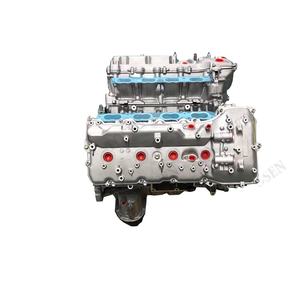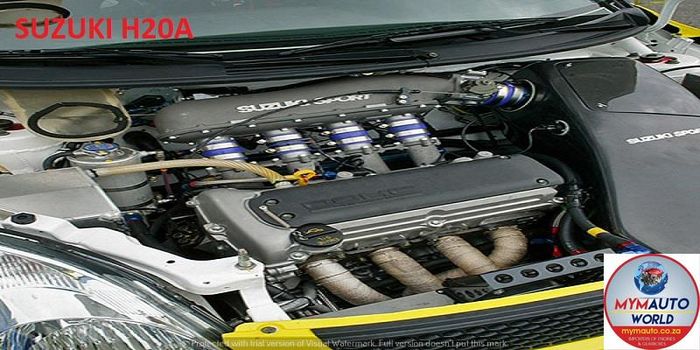Update Your Automobile with a New Opel Corsa Engine
Update Your Automobile with a New Opel Corsa Engine
Blog Article
Checking Out the Inner Operation of a Compact Lorry's Engine System
As chauffeurs, we frequently take for given the elaborate processes that happen within the confines of our car's engine system. The small yet complex equipment that pushes us ahead is a marvel of engineering accuracy and control. From the controlled explosions in the burning chamber to the careful timing of gas shot, every element plays a critical duty in the smooth operation of the engine. In this exploration of a portable vehicle's engine system, we will unravel the internal functions of this mechanical harmony, clarifying the secrets that drive us onward on our day-to-day journeys.
Burning Process Introduction
The combustion process in a portable car's engine system is a vital device that effectively transforms fuel right into power to power the car. This procedure occurs within the combustion chamber of the engine, where gas and air mix, fire up, and generate controlled explosions. The burning procedure contains 4 major stages: intake, exhaust, compression, and power.
Throughout the consumption stage, the piston moves downward, drawing in a blend of air and gas right into the combustion chamber. This downward motion creates the power required to drive the vehicle. This cyclic combustion process is basic to the operation of a small lorry's engine system, ensuring efficient energy conversion for propulsion.
Piston and Cylinder Interaction

The piston's exact fit within the cyndrical tube is vital for preserving optimal compression and avoiding energy loss throughout burning. Tight clearances between the piston and cyndrical tube wall surfaces guarantee efficient securing, enabling the piston to move efficiently without permitting gases to leak past. Proper lubrication is additionally crucial to decrease rubbing and use between these components, improving longevity and performance.
In addition, the layout and materials made use of in producing the piston and cylinder effect engine efficiency and resilience. Modern engines often use lightweight yet sturdy materials like light weight aluminum alloys for pistons and cylinder linings to reduce inertia and boost thermal efficiency. On the whole, the harmonious communication between the piston and cylinder is basic to the engine's functionality and total performance.
Gas Shot System Functionality
Gas shot systems in compact automobile engines play a critical duty in exactly delivering fuel to the burning chamber for reliable and controlled ignition. The gas injection system functions by injecting gas right into the combustion chamber at the optimal moment throughout the engine's procedure (opel corsa engine). This precise timing guarantees that the fuel blends equally with the air for correct combustion, resulting in enhanced gas performance and reduced discharges
There are largely 2 sorts of fuel shot systems made use of in compact car engines: port gas shot (PFI) and straight gas shot (DFI) PFI systems infuse gas right into the consumption port prior to the consumption valve, while DFI systems infuse gas directly into the combustion chamber. Both systems have their advantages, with DFI using much better gas atomization and PFI supplying a much more cost-efficient remedy.
Recognizing Engine Air Conditioning Devices
Reliable procedure of a portable automobile's engine depends heavily on the effectiveness of its cooling mechanisms. Engine cooling is important to avoid overheating, which can lead to serious damages and reduced performance. The cooling system in a portable lorry commonly is composed of a number of components interacting to control the engine temperature. One important part is the radiator, which makes use of coolant to soak up warm from the engine. As the hot coolant moves via the radiator, it releases heat right into the air, cooling off before returning to the engine. The water pump flows the coolant with the engine and radiator, making sure a constant flow to manage temperature level. Additionally, the thermostat aids manage the coolant flow to keep optimal engine temperature. Some lorries likewise have cooling followers that activate when extra air conditioning is required, such as during rush hour or warm weather condition. Understanding these engine air conditioning mechanisms is crucial for maintaining the efficiency and longevity of a small vehicle's engine system.

Exhaust System Components Explained
The ideal functioning of a small lorry's engine air conditioning mechanisms depends on a complementary system referred to as the exhaust system, which makes up different necessary parts for ensuring efficient emissions and engine performance. The exhaust system includes elements such as the exhaust manifold, catalytic converter, muffler, and tailpipe. The exhaust manifold gathers exhaust gases from the engine's paths and cylinders view them to the catalytic converter. The catalytic converter then converts hazardous contaminants in the exhaust into less harmful emissions prior to launching them via the muffler and tailpipe.
One critical element of the exhaust system is the oxygen sensor, which monitors the oxygen degrees in the exhaust gases to assist regulate gas usage and make sure optimal engine efficiency. opel corsa engine. Furthermore, the resonator may exist in some exhaust systems to decrease sound levels. Overall, the exhaust system plays an essential function in keeping engine effectiveness, reducing unsafe discharges, and ensuring a quieter driving experience for small vehicle proprietors

Final Thought
In verdict, the small lorry's engine system is a complex mix of components that collaborate to help with the burning procedure, convert gas into power, and remove waste gases. Recognizing the inner functions of the engine system, consisting of the piston and cyndrical tube interaction, fuel shot system, engine air conditioning mechanisms, and exhaust system elements, is critical for maintaining ideal efficiency and performance of the car.
The combustion procedure in a portable vehicle's engine system is an important mechanism that efficiently converts fuel into power click for info to power the lorry.Gas injection systems in compact automobile engines play a critical duty in exactly supplying fuel to the combustion chamber for reliable and regulated ignition.There are largely two kinds of gas shot systems used in compact vehicle engines: port fuel shot (PFI) and straight gas shot (DFI) Recognizing these engine air conditioning systems is crucial Look At This for preserving the efficiency and durability of a small car's engine system.
The optimal functioning of a compact lorry's engine air conditioning devices depends on a corresponding system understood as the exhaust system, which comprises various important components for ensuring reliable exhausts and engine performance.
Report this page